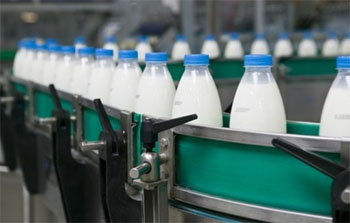The following article originally appeared on the Demand Solutions Supply Chain Blog.
If you work in production scheduling, you may not get a lot of limelight—but you should. What laypeople don't know, but what you truly understand, is that for any manufacturer, production scheduling is where the rubber meets the road.
You invest hours of hard work in the scheduling process. You may even use an advanced planning and scheduling (APS) solution to generate a precise, realistic execution plan.
Pleak Says... |
 |
| With the right APS system, you’ll get built-in algorithms that support your critical decisions by making all the toughest calculations for you. |
 |
What do you say? |
 |
| Click here to send us your comments |
|
|
|

And that plan becomes your company's ticket to accurate lead times, higher customer service levels, and a measurable ROI. It's no overstatement to say that what you do every day has concrete links to your company's overall business performance.
In my last post, I explained why so many manufacturing companies are beginning to explore the possibilities of APS solutions, and what kinds of questions they're asking about APS. But there's one more question that I think every manufacturer—whether they're using APS or still just thinking about it—would like to ask:
"What goes into a good production schedule?"
If I were to have to answer this question at a seminar or user conference, I'd probably begin by saying that a truly effective production schedule has two key characteristics:
1. It provides full details of how jobs are scheduled.
You’ve probably noticed that when you plan your schedule within an ERP system, the jobs occur within blocks of time. That’s better than no schedule at all, but it doesn’t let you visualize exactly what’s happening at any moment in time. So, how are you supposed to optimize the efficiency of your plants to maximize the profitability of your operations?
Your schedule should include an exact sequence of when production jobs will be executed. When you use an APS system, you can easily take the work orders generated by your ERP, model your production processes for a given time period, and come up with a production schedule that leaves nothing to chance.
2. It allows you to make changes on the fly for the best possible outcomes.
It’s all well and good to model your production processes in advance and come up with the ideal schedule for the upcoming week or month. But in manufacturing, change is the only constant. Orders get canceled, moved up, or pushed back. Machines go down. Key people join or leave the production team. You haven’t really earned your keep as a production planner until you’ve had to make decisions under pressure to squeeze the most efficiency out of a bad situation.
With the right APS system, you’ll get built-in algorithms that support your critical decisions by making all the toughest calculations for you. Your APS can apply mathematical search techniques to help you evaluate challenging scenarios so that you can find the most logical path through complex problems.
Of course, good production planning will always include a layer of human knowledge that can’t be represented in any algorithm. That’s why the best APS systems are also highly user-friendly, allowing you to make the little tweaks with just a few clicks.
There's much more that goes into production scheduling, of course. But I hope this gets you started thinking about how you can enhance your scheduling processes—especially if you're still running on spreadsheets. The Demand Solutions Advanced Planning and Scheduling team would love to hear from you, so drop us a line anytime with your questions.
Any reaction to this Expert Insight column? Send below.
Your Comments/Feedback
|